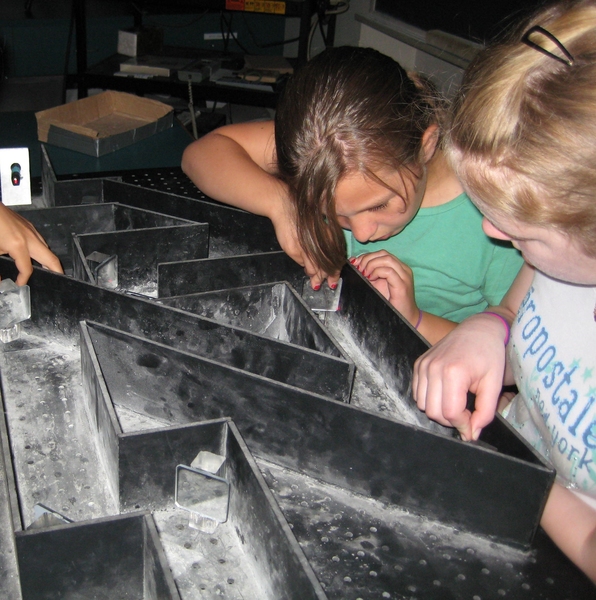With the exception of the few children who couldn’t make it to school, every sixth-grader in the Cambridge public schools — 17 classes in all — has walked through the hallways of MIT to participate in hands-on workshops at the Edgerton Center and the MIT Museum. The focus of their day? Understanding light.
As part of the Innovation Agenda developed by Cambridge Schools Superintendent Jeffrey Young, the initiative brought sixth-graders to MIT in late September and early October to deepen their understanding of how light works, a new addition to the sixth-grade curriculum. Lisa Scolaro, Junior K-12 Science Coordinator for the Cambridge Public School (CPS) District commented via email that "the development of field experiences in which all students, district-wide, engage in hands-on science directly connected to CPS science curricula provides a consistent foundational experience for teachers to draw from."
Students in the Laser Mazes workshop, with Edgerton Instructor Amy Fitzgerald, were first asked to predict the direction of a reflected beam of light on paper using protractors. They then spent time directing a beam of laser light through a maze using mirrors. With four students working together on each maze, students had to point the mirrors in the exact direction so that the laser light traveled through a complicated path and out the other end. Of course, all of these fun and games came after some time spent forming concrete understandings of angles, how to measure them using protractors and how to make predictions using these tools.
But really, it was the chalk dust that scattered the light, “illuminating” the path that the laser beam followed that made the whole experience exciting.
“Guiding the laser was really interesting because you could see how a tiny tiny tilt would move [the laser] and you’d be able to get it right on target. The chalk dust was like the spray that spies use, it was amazing,” said Clara Barry, a student at the Amigos School.
On the same day, students worked at the MIT Museum with Education Coordinator Erika Reinfeld. There, the class looked at the holography exhibit, The Jeweled Net. In tandem with the exhibit, students used laser pointers, mirrors and other reflective surfaces to understand how light is used to create holograms. Then the students looked at Berenice Abbott's historic photographs of physics experiments related to light and waves.
"The workshop gave students an opportunity to connect what they have been studying in school — the behavior of light — to a real-life application that is both beautiful and technically impressive. Knowing more about how the holographs were made enabled the students to see them in a new light (so to speak)," Erika Reinfeld remarked by email.
“The holograms have always been a mystery to me so it was very cool to find out how they worked,” said Kailash Nakagawa, an Amigos School student.
Dean Woodring Blase, Coordinator of Community-School Partners for the Cambridge Public Schools, commented that this collaboration between schools and the Institute allowed the district “to provide learning enrichment to all Cambridge students in a more comprehensive way. Knowing that all our sixth-graders had hands-on experience with lasers and mirror mazes helps our grade seven through grade 12 teachers build on that learning. In addition, all of our sixth-grade students now have walked through MIT's Infinite Corridor, creating a first step toward building other shared experiences that may well become a cornerstone of the Cambridge Public School experience.”
Sixth-graders in Cambridge attend workshops at the Edgerton Center and the MIT Museum.
Publication Date:

Caption:
Students adjust mirrors to guide the laser beam through the maze and out the other side.
Credits:
Photo: Ben Ligon





